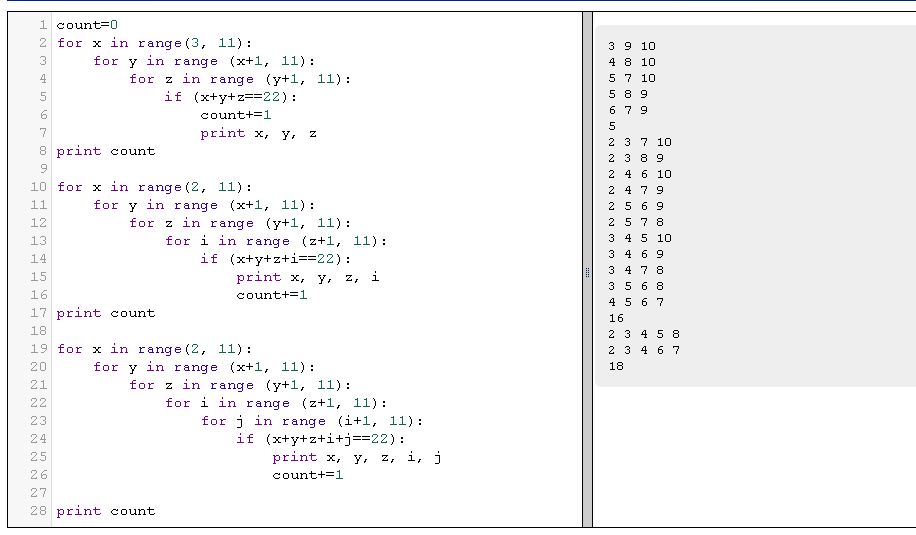Eleven Fingers
1 □ 2 □ 3 □ 4 □ 5 □ 6 □ 7 □ 8 □ 9 □ 1 0 = 1 1
There are 2 9 = 5 1 2 ways in which we can fill the squares with + , − .
How many ways would make the equation true?
Note : You are not allowed to use parenthesis.
The answer is 18.
This section requires Javascript.
You are seeing this because something didn't load right. We suggest you, (a) try
refreshing the page, (b) enabling javascript if it is disabled on your browser and,
finally, (c)
loading the
non-javascript version of this page
. We're sorry about the hassle.
4 solutions
Moderator note:
Yes, this should be the intended solution the author is looking for.
It would be better for the reader to know how you came up with these 18 ways. Is there a systematic way to list out the numbers?
Bonus question : What are all the possible positive integer values of n > 1 such that the equation below have at least 1 solution?
1 □ 2 □ 3 □ … □ n = n + 1
2 5 5 10?? How's that possible??
Log in to reply
Thanks. Yes, I have made a mistake. I have changed the table. I actually used Python to list the 18 solutions. Then I used a spreadsheet and made a mistake.
To Challenge Master: Are there finite solutions to the bonus question?
Let the sum of the numbers that are added on the RHS be S a and the sum of the numbers that are subtracted on the RHS be S s .
Note that S a = S s + 1 1 . Since S a + S s + 1 1 = 6 6 , then it follows that S a = 3 3 and S s + 1 = 3 3 ⟹ S s = 2 2 .
It's easier to count S s , so we do so with a lot of listing and get 1 8 .
Moderator note:
Yes, this should be the intended solution the author is looking for.
It isn't that hard to list out all 18 solutions.
Bonus question : Construct a a certain monic 54th degree polynomial such that we can find the number of ways to write 22 as the sum of distinct positive integers greater than 1 but less than 11.
Python 3.3:
1 2 3 4 5 6 7 8 9 |
|
Moderator note:
Based on the other existing solutions, can you work out another programming code such that the we can reduce the number of possible cases?
Log in to reply
Okay, for anyone looking for a non-computer assisted problem.... Here's the synopsis:
1 + 2 + 3 + ... + 10 = 55
If we change any of the signs from + to -, we need to subtract an even number
So, 55 - 2( number) = 11 ==> number = 22
This means that we want to find the number of ways for which the sum of distinct positive integers greater than 1 but less than 11 such that their sum is 22.
This gives the answer of 18.



Let the sum of the LHS be N . Consider the operator ' ± ' be switches. So the number of switches is 9 , and let the switch before 2 be s 2 ; 3 , s 3 ; 4 , s 4 ; ... and 1 0 , s 1 0 . Therefore, the largest N is when all the switches are on ' + ', N M a x = 1 + 2 + 3 + 4 + 5 + 6 + 7 + 8 + 9 + 1 0 = 5 5 . We note that when we switch s n from on to off or ' + ' to ' − ', we minus 2 n from N M a x . For us to get N = 1 1 = 5 5 − 4 4 = 5 5 − 2 ( 2 2 ) , we have to switch off ∑ n = 2 2 . The acceptable ways are as follows and there are 1 8 ways.